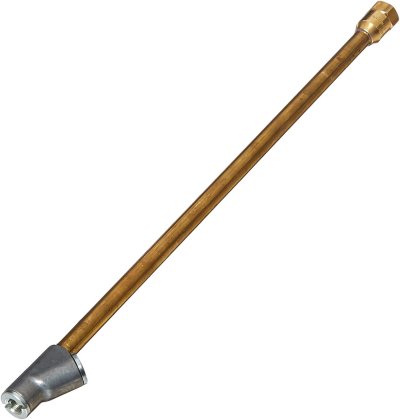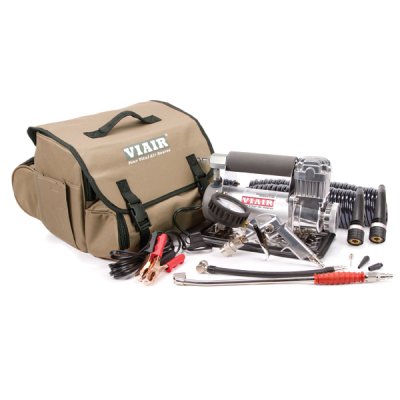DaveMcArthur
New Member
- Joined
- Apr 19, 2022
- Messages
- 5
Hi!
We've had a Coachmen Beyond 2021 for about a year and are still learning how to maintain and use it. Lots of fun! One seemingly simple issue is how to fill its tires. Our experience may not be like yours and you may have solved this problem in a different way (which we'd be interested in hearing), but...
Gas station and home plug-in tire inflators can do just fine with most RV tires – except inner-dualie tires. The problem is that you need an inflator hose that is long enough and flexible enough to reach the inner-dualie valve. The hose also needs to attach by screwing onto the valve – we found that hoses that attach through tightening a lever simply can't get into the tight space between the outer- and inner-dualie tires.
We tried unsuccessfully to get several inflators to work on our Coachman 2021 Beyond (with a Ford Transit chassis). The Slime 40047 inflator was the first one we found that would work for us. We are now able to fill all of our tires to their specified pressure levels. This is a big relief because – as you may have discovered yourself – you cannot go into any local garage, or even, in our case, a Ford repair center, and expect them to be able to properly inflate your inner-dualie tires. If you have had this sort of unhappy experience, we recommend you try out the Slime 40047.
While the Slime 40047 works well for us, it is not a magic bullet. It still takes time and care to attach the hose to the dualie tire valve. Because it is awkward to thread the hose on and remove it when done, you can easily lose several pounds of pressure. We therefore tend to overfill our inner-dualie tires to about 60 lb (the ideal pressure is 55 lb) and, if we are lucky enough to unscrew the hose without losing much pressure, we manually release as much air as we need to.
If your inner-dualie valves are aligned well with the holes in the rim of the outer dualie, attaching the inflator hose to the inner dualie should be easy, On the other hand, if they are not well aligned, attaching the hose can be very challenging. If this is the case with your dualie tires, you may need to get your mechanic to reposition your outer tires to get the valves properly aligned. Good luck with that!
We've had a Coachmen Beyond 2021 for about a year and are still learning how to maintain and use it. Lots of fun! One seemingly simple issue is how to fill its tires. Our experience may not be like yours and you may have solved this problem in a different way (which we'd be interested in hearing), but...
Gas station and home plug-in tire inflators can do just fine with most RV tires – except inner-dualie tires. The problem is that you need an inflator hose that is long enough and flexible enough to reach the inner-dualie valve. The hose also needs to attach by screwing onto the valve – we found that hoses that attach through tightening a lever simply can't get into the tight space between the outer- and inner-dualie tires.
We tried unsuccessfully to get several inflators to work on our Coachman 2021 Beyond (with a Ford Transit chassis). The Slime 40047 inflator was the first one we found that would work for us. We are now able to fill all of our tires to their specified pressure levels. This is a big relief because – as you may have discovered yourself – you cannot go into any local garage, or even, in our case, a Ford repair center, and expect them to be able to properly inflate your inner-dualie tires. If you have had this sort of unhappy experience, we recommend you try out the Slime 40047.
While the Slime 40047 works well for us, it is not a magic bullet. It still takes time and care to attach the hose to the dualie tire valve. Because it is awkward to thread the hose on and remove it when done, you can easily lose several pounds of pressure. We therefore tend to overfill our inner-dualie tires to about 60 lb (the ideal pressure is 55 lb) and, if we are lucky enough to unscrew the hose without losing much pressure, we manually release as much air as we need to.
If your inner-dualie valves are aligned well with the holes in the rim of the outer dualie, attaching the inflator hose to the inner dualie should be easy, On the other hand, if they are not well aligned, attaching the hose can be very challenging. If this is the case with your dualie tires, you may need to get your mechanic to reposition your outer tires to get the valves properly aligned. Good luck with that!



